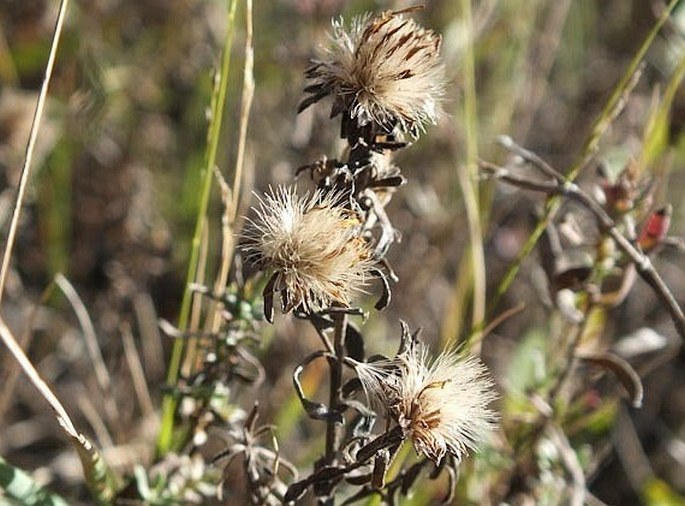Syn.: Aster ericoides L., Chrysopsis ericoides (Torr.) Torr. et James ex Eaton, Eucephalus ericoides (L.) Nutt., Lasallea ericoides (L.) Semple et L. Brouillet, Virgulus ericoides (L.) Reveal et Keener
Family: Asteraceae Bercht. et J. Presl

Distribution: North American species. Found in most of Canada and US, reaching into northern Mexico (Coahuila, Nuevo Leon). Besides the nominate variety, var. pansum is also recognized and this one occurs in higher elevations of northwest part of the area, compared with the nominate variety found in the southeast part and descending into lowlands.
Ecology: Grows in both dry and wetter habitats, prairie, sand dunes, disturbed areas, in elevations from 30 to 2200 m. Blooms from July to October.

Description: Perennial herb, 20–80(–100) cm tall. Stem ascending to erect, grey brown to brown, Tufted, branches numerous, rough haired; rootstock short. Basal leaves sessile, oblanceolate, 10–50 × 10–25 mm, with 3 veins, margins smooth, sometimes toothed; stem leaves sessile, 1 or 3 veins, linear to lanceolate, 10–40(–60) × 1.5–4(–7) mm, hairy; topmost leaves narrowly ovoid, 10–40 × 1.5–3.5 mm. Flower heads borne at ends of branches, 8–12 mm across; bracts oblanceolate in 3 overlapping rows, outer ones often spine-tipped; disc florets 10–25, yellow; ray florets 8–20, white, less than 6.5 mm long. Fruit is an achene with a pappus of capillary bristles.
Note: The plants under the name Symphyotrichum ericoides and Aster eicoides are sold by nurseries in Europe, however these might be hybrids or cultivars of several other species of Symphiotrichum, like S. dumosum, S. lateriflorum, S. pilosum, or S. racemosum. The identification is mostly dubious and these errors are being perpetuated from European gardening literature from 19th century.






These images were taken in Canada, Alberta, Calgary, Irrigation Canal and Confluence Park (August 12 and September 22, 2013).


